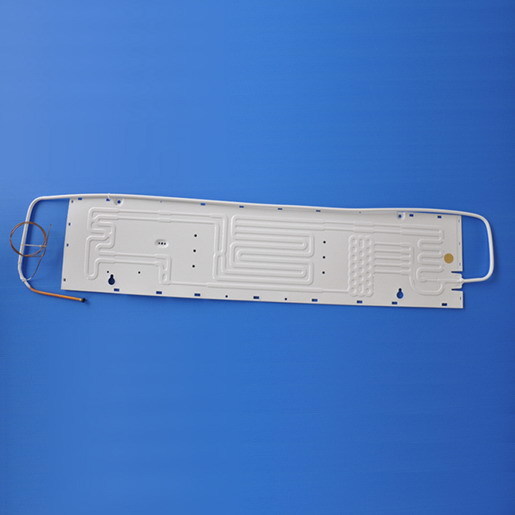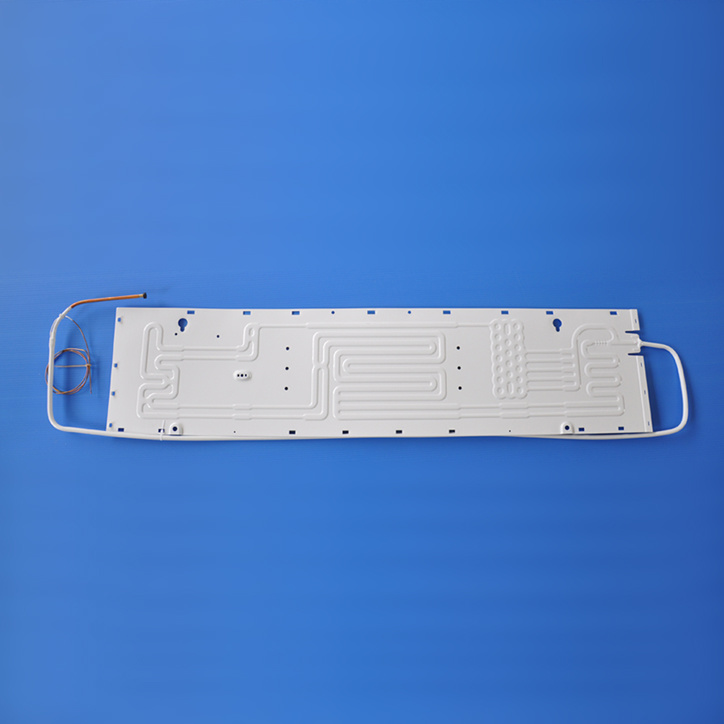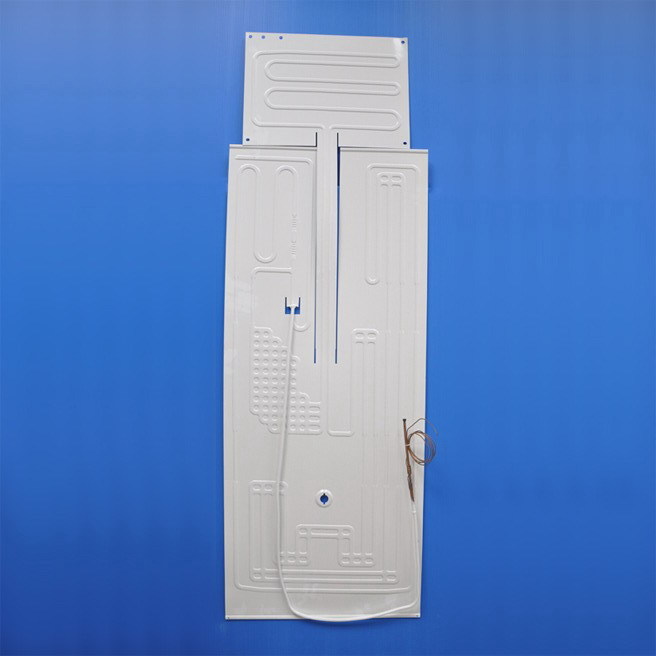Understanding the Mechanics of Heat Exchangers: Focus on Aluminum Fin Technology
Understanding the Mechanics of Heat Exchangers: Focus on Aluminum Fin Technology Table of Contents 1. Introduction to Heat Exchangers 2. Principles of Heat Transfer 3. Types of Heat Exchangers 4. The Role of Aluminum Fins in Heat Exchangers 5. Advantages of Aluminum Fin Technology 6. Applications of Aluminum Fin Heat Exchangers 7. Maintenance and Care for Aluminum Fin
Published:
2025-08-06
source:
author:
Understanding the Mechanics of Heat Exchangers: Focus on Aluminum Fin Technology
Table of Contents
- 1. Introduction to Heat Exchangers
- 2. Principles of Heat Transfer
- 3. Types of Heat Exchangers
- 4. The Role of Aluminum Fins in Heat Exchangers
- 5. Advantages of Aluminum Fin Technology
- 6. Applications of Aluminum Fin Heat Exchangers
- 7. Maintenance and Care for Aluminum Fin Heat Exchangers
- 8. The Future of Heat Exchanger Technology
- 9. Frequently Asked Questions
- 10. Conclusion
1. Introduction to Heat Exchangers
Heat exchangers are critical components in various industrial processes, serving the essential function of transferring heat from one medium to another. These devices play a pivotal role in efficiency and energy conservation across diverse applications, ranging from HVAC systems to chemical processing and food manufacturing. The primary objective of a heat exchanger is to regulate temperature, ensuring optimal operation while minimizing energy loss.
2. Principles of Heat Transfer
Understanding heat transfer is fundamental to grasping how heat exchangers function. The transfer of heat occurs through three primary mechanisms: conduction, convection, and radiation.
2.1 Conduction
Conduction is the process by which heat is transferred through a material without any movement of the material itself. It occurs at the molecular level, where faster-moving molecules collide with slower ones, transferring energy.
2.2 Convection
Convection involves the transfer of heat by the physical movement of a fluid. In heat exchangers, convection is typically enhanced through the use of fins, which increase the surface area available for heat transfer.
2.3 Radiation
Radiation is the transfer of heat in the form of electromagnetic waves. While it is generally less significant in most heat exchangers, it can still influence overall efficiency in certain applications.
3. Types of Heat Exchangers
Various types of heat exchangers exist, each designed for specific applications and efficiency needs. The most common types include:
3.1 Shell and Tube Heat Exchangers
These consist of a series of tubes, one set carrying the hot fluid and the other the cold fluid. They are widely used due to their ability to handle high pressures and temperatures.
3.2 Plate Heat Exchangers
Constructed from thin plates stacked together, these are designed for efficient heat transfer and are often used in food processing and refrigeration applications.
3.3 Air-Cooled Heat Exchangers
Employing ambient air to remove heat from a process fluid, air-cooled heat exchangers are prevalent in outdoor applications where water use is limited.
4. The Role of Aluminum Fins in Heat Exchangers
Aluminum fins are a crucial element in the design of many heat exchangers. They enhance heat transfer efficiency by increasing the surface area available for heat exchange.
4.1 Properties of Aluminum
Aluminum is favored in heat exchanger manufacturing due to its lightweight nature, high thermal conductivity, and resistance to corrosion. These properties enable effective heat transfer while maintaining structural integrity.
4.2 Design and Configuration
Fins can be designed in various shapes and arrangements, including straight, louvered, and serrated configurations. Each design aims to maximize airflow and enhance thermal performance.
5. Advantages of Aluminum Fin Technology
Opting for aluminum fin technology in heat exchangers presents numerous advantages:
5.1 Improved Thermal Efficiency
By utilizing aluminum fins, heat exchangers can achieve greater thermal exchange rates, leading to improved efficiency and reduced energy consumption.
5.2 Lightweight Construction
Aluminum's light weight facilitates easier installation and maintenance, allowing for reduced labor costs and increased versatility in design.
5.3 Corrosion Resistance
Aluminum naturally forms a protective oxide layer, rendering it resistant to corrosion and extending the lifespan of heat exchangers in various environments.
5.4 Cost-Effectiveness
While the initial investment in aluminum fin technology may be higher, the long-term savings associated with energy efficiency and reduced maintenance costs often outweigh this.
6. Applications of Aluminum Fin Heat Exchangers
Aluminum fin heat exchangers are employed across multiple industries, showcasing their versatility and effectiveness:
6.1 HVAC Systems
In heating, ventilation, and air conditioning systems, aluminum fin heat exchangers are used to regulate temperature and improve indoor air quality.
6.2 Automotive Industry
Automotive manufacturers utilize aluminum fin heat exchangers in radiators and intercoolers to enhance engine performance and efficiency.
6.3 Food and Beverage Processing
In food and beverage applications, these heat exchangers are vital for pasteurization, cooling, and temperature control processes.
6.4 Chemical Processing
Aluminum fin technology is also significant in chemical processing, where heat management is crucial for reaction efficiency and safety.
7. Maintenance and Care for Aluminum Fin Heat Exchangers
Proper maintenance is essential for ensuring the longevity and efficiency of aluminum fin heat exchangers. Regular inspections, cleaning, and timely repairs can prevent costly downtime and enhance overall performance.
7.1 Routine Inspections
Conducting routine inspections helps identify any potential issues, such as corrosion or blockages, that could hinder performance.
7.2 Cleaning Techniques
Cleaning fins regularly is vital to maintaining optimal airflow and heat transfer efficiency. Techniques may include compressed air, chemical cleaners, or even ultrasonic cleaning methods.
8. The Future of Heat Exchanger Technology
As industries continue to evolve, the demand for more efficient heat exchangers persists. Innovations in materials, designs, and manufacturing processes are likely to enhance the capabilities of aluminum fin technology and heat exchanger systems overall.
9. Frequently Asked Questions
9.1 What is the primary function of a heat exchanger?
The primary function of a heat exchanger is to transfer heat between two or more fluids without mixing them, enabling temperature regulation within various systems.
9.2 Why are aluminum fins preferred in heat exchangers?
Aluminum fins are preferred due to their lightweight, high thermal conductivity, corrosion resistance, and cost-effectiveness in enhancing heat transfer efficiency.
9.3 How do I maintain an aluminum fin heat exchanger?
Maintenance involves routine inspections, regular cleaning, and prompt repairs to ensure optimal performance and longevity.
9.4 What industries benefit from aluminum fin heat exchangers?
Industries such as HVAC, automotive, food processing, and chemical manufacturing benefit significantly from aluminum fin heat exchangers.
9.5 Are there any disadvantages to using aluminum fin technology?
While aluminum fins offer many advantages, they may not perform as well in extreme temperatures compared to other materials like copper or stainless steel.
10. Conclusion
In summary, heat exchangers equipped with aluminum fin technology stand at the forefront of thermal management solutions. Their unique properties and advantages make them indispensable in various industrial applications. By understanding the mechanics behind these systems, professionals can make informed decisions that enhance efficiency, reduce energy consumption, and extend equipment lifespan. As we look toward the future, continuous innovations in this field will undoubtedly lead to even greater advancements, making aluminum fin heat exchangers a critical component in achieving energy sustainability and operational excellence.
Hot News
Mobile website

language
English
العربية
বাংলাদেশ
Български
Hrvatski
Česky
Dansk
Nederland
 Esperanto
Esperanto
Slovenski
Filipino
Suomi
Français
Maori
 Shqiptare
Shqiptare
Georgian
 Euskara
Euskara
Deutsch
Ελλάδα
ישראל
इंडिया
Magyarország
Ísland
Indonesia
Irlanda
Italia
日本語
Sovensko
Հայաստան
한국
Kyrgyz
ປະເທດລາວ
 Zulu
Zulu
Latvian
Lithuanian
Luxembourgish
 Latinus
Latinus
Macedonian
Малайская
Maltese
Монгол улс
 Cymraeg
Cymraeg
ဗမာ
 தமிழ்
தமிழ்
नेपाल
Norge
ایران
Polska
Portugal
România
Российская
Србија
 Slovak
Slovak
Србија
 Slovak
Slovak
Bosanski
Slovenian
Беларус
España
Sverige
Точик
ประเทศไทย
Türk
Azərbaycan
Uzbek
 Afrikaans
Afrikaans
Việt Nam
Tel: 0086-13775291367
E-mail: michael@xinxincool.com
ADD:No. 32 Tianshan Road, Xinqiao Town, Xinbei District, Changzhou City, Jiangsu Province
Copyright © 2024 Changzhou Xinxin Refrigeration Equipment Co., Ltd.





